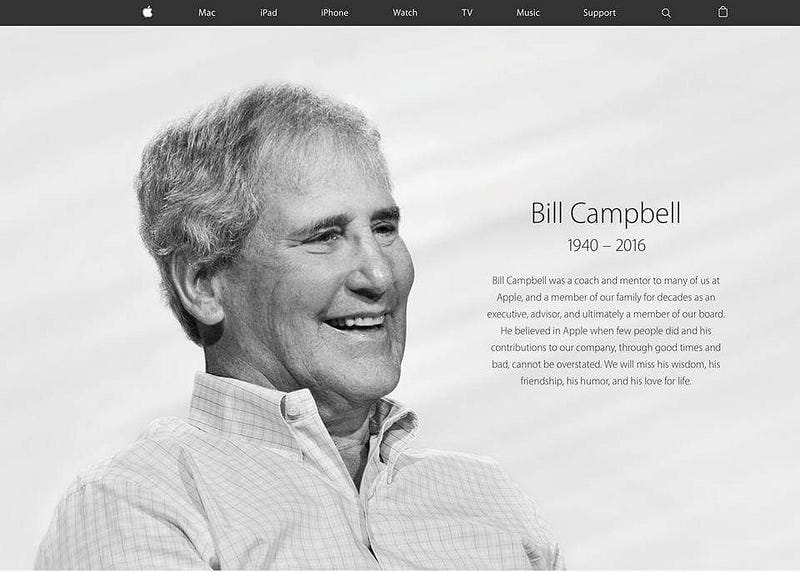I was lucky enough to meet Bill Campbell in 2005 when I interviewed him for a book. As he did for so many, Bill generously offered to mentor me when I finished the project, and he coached me through some big career questions. In the years that followed, including over many beers at the Old Pro bar in Palo Alto at Bill’s “TGIF” Friday happy hours, one thing was clear: Bill never forgot where he came from.
Despite his successes in Silicon Valley, including as CEO of Intuit, an Apple board member and confidant to Steve Jobs, and mentor to the Google founders, Bill returned every year to Homestead, Pennsylvania, the steel town where he grew up. He often took batches of his friends, many technology executives, and made many generous donations to the local schools, including both millions of dollars of donations to local schools as well as technology gifts.
Like everything Bill did, he did it without publicity or fanfare. But he gave a shit. Bill never got isolated in the Silicon Valley bubble, and he built bridges to parts of the country that benefited greatly from that.
We need that same spirit — the Bill Campbell ethos of going home and of reaching out of Silicon Valley — to provide connective tissue to other parts of the country more than ever.
It’s so simple to start. Go home. Go to where you grew up, and find where you can be useful. Almost everyone in Silicon Valley is a transplant.
I grew up in the rural foothills of Northern California between Sacramento and Tahoe. When I go home, I try to spend time with teachers at my high school, Colfax High School. One of those teachers, Jonathan Schwartz, repurposed the wood shop in order to teach kids how to work with their hands to be makers, as well as to become facile with design thinking, 3D printing, CAD/CAM programing, and pre-engineering skills. In a few short years, the entire math department has followed Jonathan’s lead and they have turned Colfax into the most innovative high school in the region.
When I told Carl Bass, the former CEO of Autodesk, the story about Jonathan and my high school, Bass shared: You know what, Peter, the most inspiring part of my job is going to gatherings with literally hundreds of teachers like Jonathan who are reinventing their schools around the country.
Under Bass’ leadership, Autodesk made its software free to educators. It used to be an over $100 million business.
These innovators like Jonathan often need only a slight boost. A connection to Google. Some free software. A new computer.
All of us can go home and make an enormous difference to the future of the young and old people with these seemingly small little boosts.
As badly as the country needs better connective tissue, if we don’t act now, the history of Silicon Valley might remember this era in a very different way than the example Bill Campbell set.

Peter Sims (@petersims) - Founder & CEO, Parliament, inc.; former VC, accidental author (Little Bets: How Breakthrough Ideas Emerge from Small Discoveries & True North); and, social entrepreneur and angel investor (the BLK SHP — black sheep).









